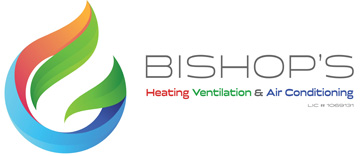It’s always nice when we manage to save money on our utility bills, but you should know there’s a way to do it when you aren’t even home.
The secret is your thermostat. By making the most out of your thermostat, you can tailor the temperature to your needs. That means you can have different temperature settings for when you’re home, away or even when you’re asleep.
By trying a few of these schedules, you’ll be able to enjoy comfortable temperatures while also keeping more of your money. Take a look at a few ways your thermostat doesn’t have to use up all your summer spending money:
While at Home
Pretty much whenever you’re home, you want a nice range of pleasant temperatures. For the most part, you probably have your thermostat lower in the summer while inside to appreciate the cool air.
But in terms of energy efficiency, the best range for the summer is in fact anywhere between 78 and 80 degrees Fahrenheit. By adjusting things a few degrees, you’ll keep cool while still lowering your monthly energy bill.
While Out of the House
If you’re setting the temperature for a vacation or other trip away from the house, it’s advantageous to set the thermostat higher than you would if you were in the house.
For some homes, you can set the thermostat to temperatures as high as 88 degrees while no one is home before lowering it back to the sweet spot of 78-80 degrees after you return. This way, your air conditioning system isn’t working around the clock to provide cooling for a bunch of empty rooms.
While Asleep
When it comes to sleeping in the summer, you want a nice cool temperature. A good rule of thumb is between 68-72 degrees Fahrenheit. There’s less risk of getting too hot or too cold when you are trying to get some rest.
Other Ways to Use Less Energy:
- Put in a smart thermostat: Trying a smart thermostat in the summer is an excellent way to reduce energy costs by automatically adjusting to your lifestyle and idea of what comfortable is. They can lower the temperature while you are home or sleeping, before allowing it to get warmer when the house is empty. Using reputed brands and models such as the Lennox iComfort, you are able to adjust settings and schedules through your smartphone, tablet or laptop. Requesting smart thermostat installation in your Sacramento home is an effortless way to set the correct temperature whether you’re at home or across the country.
- Replace current equipment with a newer HVAC system: A new HVAC system saves money right from the start. By investing in a more energy-efficient system, you can also count on lower utility bills since more efficient equipment requires less energy to heat and cool your home. Air conditioning installation in Sacramento is only a phone call away, so don’t hesitate to reach out to local pros like Bishop’s HVAC who can set you up for success.
- Stay on top of routine AC maintenance: Investing in or ignoring regular air conditioning maintenance in Sacramento can have a significant impact on your utility bills. With regular cleaning of the coils, checking for damage and clearing air vents of dust and debris, you may notice your HVAC system perform better during day-to-day use.. Higher energy efficiency will also reduce strain on the unit and lowers operational costs, leading to lower energy usage, which translates into lower energy bills.
- Replace your air filter regularly: Cleaning or replacing the air filter regularly saves money by improving airflow. When filters become clogged, air conditioners have to work harder, and the strain can reduce the system’s life span and lead to breakdowns.
- Check if you have enough insulation in the attic: Insulation is one of the key components in any energy-efficient home, securing the hot air outside and the cool air inside over the summer. The North American Insulation Manufacturers Association (NAIMA) offers an official recommendation stating homeowners in souther states should have at least 13-14 inches of insulation, while states further north need 16-18 inches.
- Check your ventilation: A leak in the air ducts could increase your energy bills much more than 20 percent, plus it can affect equipment such as your water heater, clothes dryer and other appliances throughout your home. Watching for signs of leaks and sealing them can fix both of those problems.
- Seal all other leaky spots in your home: Finding and sealing any remaining leaks in your home with caulk, foam sealant or weather-stripping can help keep it cooler on hot summer days. You should also check for any gaps around windows, doors and even outdoor fixtures. Making time to seal leaks now can help you save a lot over time.
